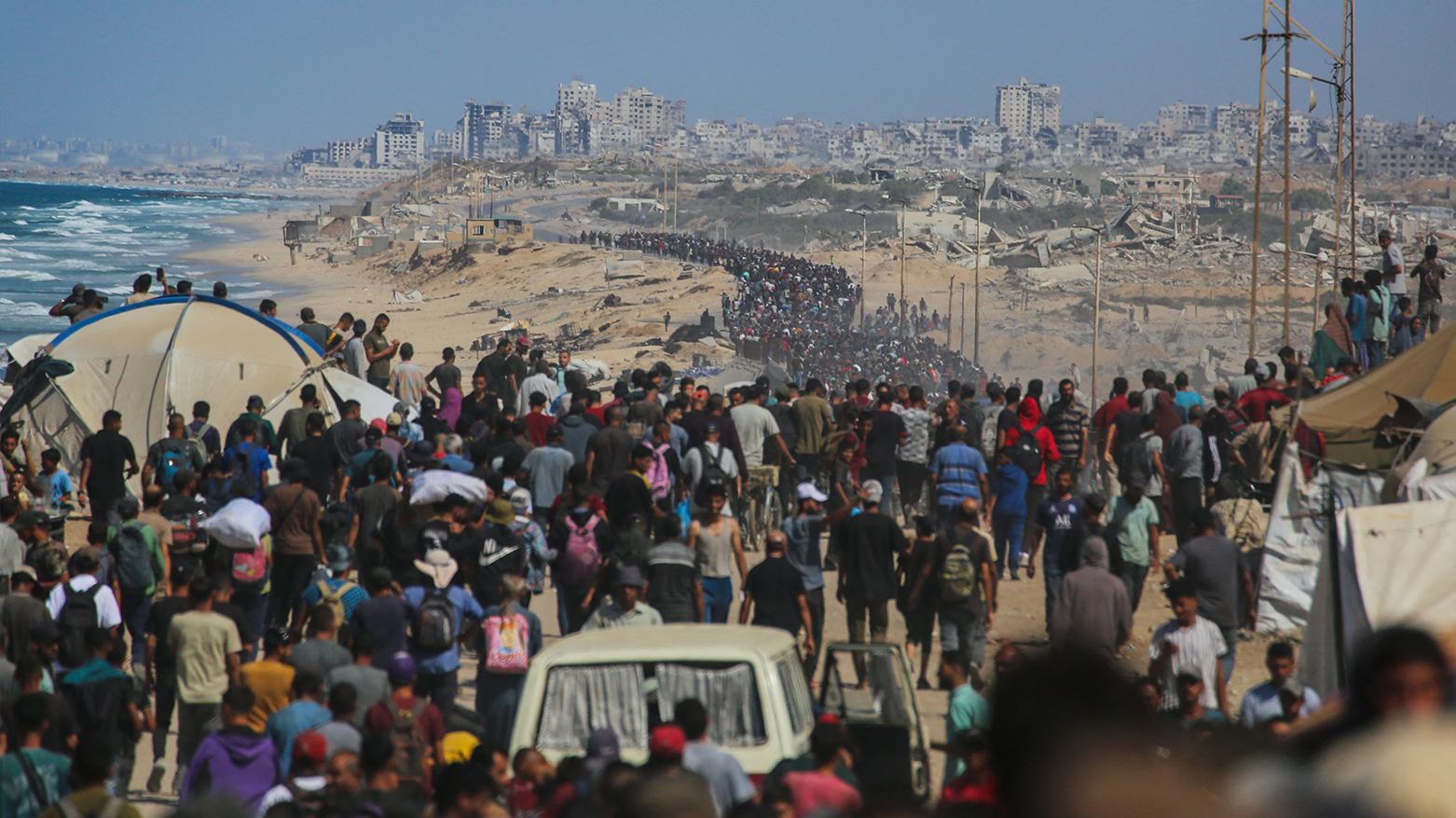Israel Publishes List of 250 Prisoners to Be Freed in Gaza Deal
Israel released a list of 250 Palestinian prisoners, including a PIJ commander, to be freed in a hostage-ceasefire deal, excluding some top leaders.

ERBIL (Kurdistan24) - In a move that lays bare the painful and morally complex compromises at the heart of the new Gaza ceasefire agreement, the Israeli government on Friday published the full list of 250 Palestinian security prisoners serving life sentences who are slated for release in exchange for the return of all remaining Israeli hostages.
The list, published by the Justice Ministry and reported by the Times of Israel, includes the names of individuals convicted of orchestrating and carrying out deadly terror attacks, most notably a senior commander of the Palestinian Islamic Jihad responsible for a series of suicide bombings that killed 13 people.
While several high-profile militant leaders whose release had been demanded by Hamas are conspicuously absent from the list, the inclusion of prisoners with significant blood on their hands underscores the "unbearably heavy price," as one far-right Israeli minister has described it, that the nation is preparing to pay to bring its captive citizens, both living and deceased, back home.
The publication of the list is a critical and legally mandated step in the implementation of the U.S.-backed hostage-ceasefire agreement, which was formally approved by the Israeli cabinet on Thursday.
The deal, the first phase of a broader 20-point peace plan proposed by U.S. President Donald Trump, is aimed at securing the return of all remaining hostages and bringing a permanent end to the devastating, more than two-year-long war in Gaza.
According to the terms of the agreement, Hamas is required to release all 47 hostages still held from the 251 people it abducted during its brutal attack on southern Israel on October 7, 2023.
This includes the 20 abductees believed to still be alive and the remains of 27 others. The remains of one more hostage, held in Gaza since 2014, are also expected to be returned, according to Agence France-Presse (AFP).
In exchange, Israel has agreed to a massive prisoner release. In addition to the 250 security prisoners serving life sentences, another 1,700 Gazan detainees who were arrested after, but not directly involved in, the October 7 attack will also be freed.
The prisoners are only expected to be released after the 72-hour period in which all hostages are to be returned has been successfully completed.
The list of the 250 prisoners, as reported by The Times of Israel, reveals the difficult choices and last-minute negotiations that have shaped the final agreement.
Of the 250, 15 are slated to be freed to East Jerusalem, 100 to the West Bank, and 135 are designated for deportation, likely to be exiled abroad. The composition of the list was subject to some last-minute changes, with negotiators reportedly agreeing on Friday morning to swap 11 prisoners affiliated with the Fatah party for an equal number of Hamas-affiliated prisoners.
Despite this swap, several of the most prominent Palestinian militant leaders, who are seen by many as symbols of the resistance and whose release has been a long-standing demand of Hamas, are not included on the final list.
According to both The Times of Israel and AFP, these include the prominent Fatah figure Marwan Barghouti, who is sometimes described by his supporters as the "Palestinian Mandela"; the leader of the Popular Front for the Liberation of Palestine, Ahmad Sa'adat; and senior Hamas figures Ibrahim Hamed, Hassan Salameh, and Abbas al-Sayyed.
Their exclusion represents a significant, though likely hard-won, concession from Hamas, or a red line that Israeli negotiators refused to cross.
However, the list of those who are scheduled to be released is still deeply troubling for many in Israel. Topping this list is Iyad Abu al-Rub, a commander of the Palestinian Islamic Jihad in the Jenin area of the West Bank.
According to The Times of Israel, he is directly responsible for orchestrating and overseeing a number of deadly terror attacks, including a suicide bombing in Shadmot Mechola in June 2003, a suicide bombing in Tel Aviv in February 2004, and a suicide bombing in Hadera in 2005. A total of 13 people were killed across these three horrific attacks.
Also set to be released is Muhammad Zakarneh, a Fatah operative who planned the 2009 attack in which a taxi driver named Grigory Raginovich was murdered. Another prisoner on the list is Muhammad Abu al-Rub, who in 2017 carried out a stabbing attack that killed Reuven Shmerling.
The list also includes Mahmoud Qawasmeh, a senior Hamas member who had been previously released in the 2011 Gilad Shalit prisoner exchange, deported to Gaza, and then re-arrested during the current war in 2024.
The publication of this list, with its stark and painful details, is a legally required part of the process, designed to allow the Israeli public a period to review the names and to potentially lodge legal appeals against the release of specific individuals.
However, it is widely expected that any such appeals will be rejected by the courts, as has been the case in previous prisoner exchanges, clearing the way for the releases to proceed once the hostages have been returned.
The deeply controversial nature of these releases highlights the immense internal political pressure Prime Minister Benjamin Netanyahu has faced in securing the cabinet's approval for the deal, a deal that represents a fundamental and agonizing choice between the principle of not negotiating with terrorists and the sacred duty to bring captive citizens home.
